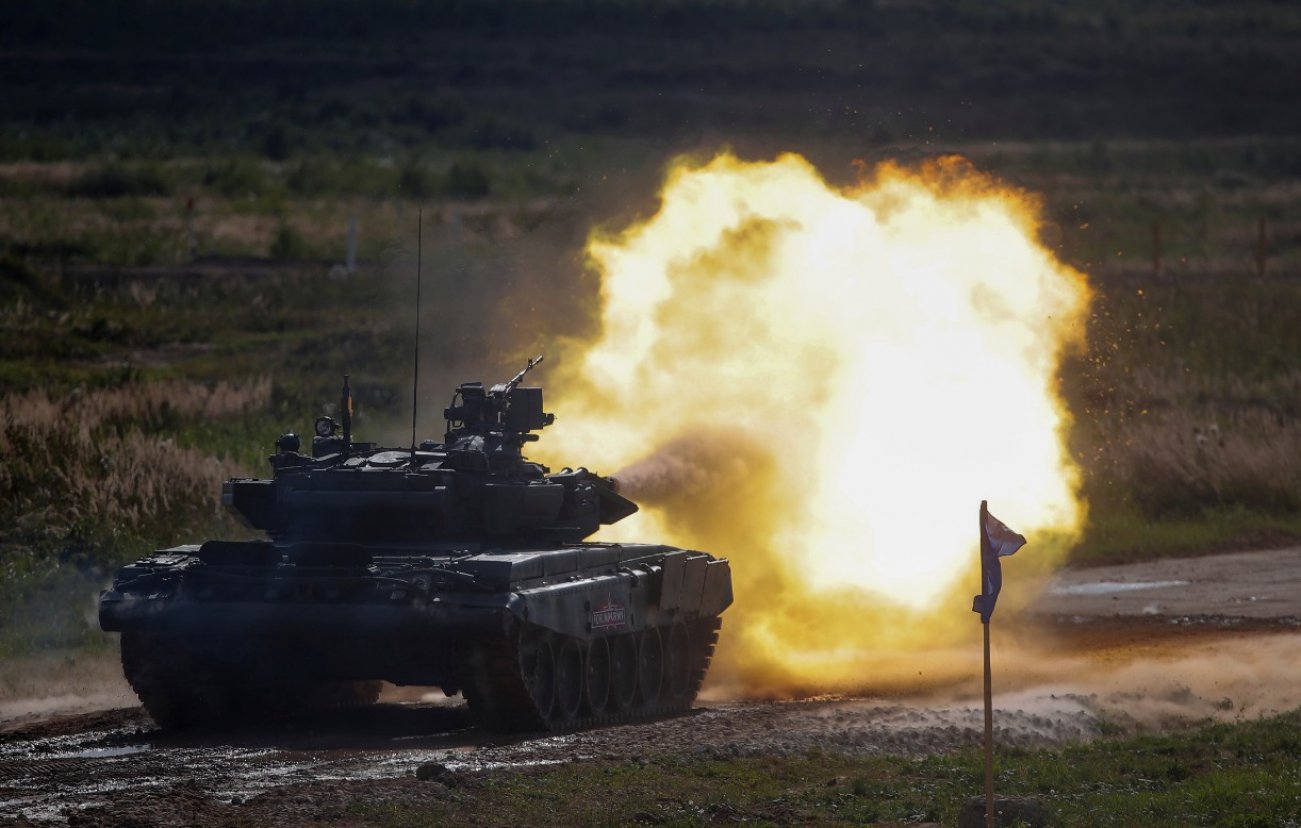Charlie Gao
History, Europe

Here's What You Need To Remember: The Taran was designed to use its nuclear shells to begin the attack, and then later use ATGMs to punch through armor. The initial nuclear projectiles would be fired to disrupt enemy electronics and kill soft targets, not directly at enemy tanks in an attempt to penetrate them.
In the 1950s and 1960s when tactical nuclear weapons were expected to rule the battlefield, the Soviet Army developed a variety of short-range tactical nuclear launchers, their answer to the American launchers like the Davy Crockett.
One of these systems was the “Reseda” launcher, two 230mm recoilless rifles that would fire an oversize 360mm tactical nuke up to six kilometers away. These launchers were mounted on a BTR-60 chassis.
But by the late 1960s, such simple systems were considered to be too primitive. A new generation of tactical nuclear launchers was ordered to be developed. Two systems were created as a result of this push, “Rosehip” for motorized rifle regiments and “Taran” for tank units.
The “Taran” project incorporated another avenue of development that was very “hot” at the time in the Soviet Union, the “missile tank.” The IT-1 tank was developed around the same time in the Soviet Union, which featured an anti-tank guided missile launcher as the primary weapon, as opposed to a traditional main gun.
Combining these characteristics, the Taran project was to create a missile tank that could launch large tactical nukes, then follow up in the attack by firing Anti-Tank Guided Missiles (ATGMs). The tank was to be based on the T-64 chassis. The turret was to be completely new and feature a rocket-gun (similar to those mounted on the German Sturmtiger).
The tactical nuclear projectile itself was said to have a caliber of 300mm and a launch weight of 150 kg. The warhead weighed 65 kg and had a yield of 0.3 kilotons. Three of these projectiles were to be carried in each Taran.
While requirements for the project required the system to be able to fire out to 8 km, calculations suggest that the rocket projectile could have reached up to 12 km.
However, the rocket projectiles lacked any sort of guidance. In direct fire mode, the projectiles were expected to land within 100m of the aim point. Firing in indirect mode, this error would be increased by 2.5x.
The Taran was also meant to carry around 10-12 ATGMs in addition to nuclear projectiles. The designers wanted the Taran to be able to attack with regular tanks to mop up surviving vehicles after firing its nuclear salvo, and the large caliber of the gun made it suitable to fire ATGMs, as the effectiveness of a HEAT warhead is mostly correlated to the diameter of the warhead.
These ATGMs were estimated to be able to punch through 300mm of steel.
But by the 1970s, Soviet interest in the Taran faded. The “nuclear battlefield” was on the way out, with fears that the use of tactical nukes could lead to further escalation. The accuracy of the Taran’s main gun was also considered insufficient with the small yield of its warheads. The Taran would only be effective on large concentrations of enemy forces with its small warhead.
For these reasons, the Taran project was killed in the 1970s.
The concept of a gun that could fire both regular projectiles and guided missiles was eventually added to the regular T-64 in the T-64B.
But the Taran might not have killed the concept of a nuclear tank for the Soviets. One of the key features of the Object 195 tank prototype (considered by some to be the predecessor of the current T-14 Armata) was its ability to fire 152mm artillery rounds out of its main gun.
Theoretically, the Object 195 could fire the 3BV3 tactical nuclear shell out of its gun. This shell features a yield of 1kt, three times more powerful than the Taran’s, due to further development and miniaturization of nuclear warhead technology.
As the Armata is designed to be able to retrofit a 152mm gun in the future, we may see a return of a nuclear-capable tank to the battlefield.
Some Russian sources have attempted to discredit the usefulness of a nuclear tank.
However, their arguments, that a nuclear shell would be incredibly self-destructive, and that regular depleted uranium shells are better for anti-tank combat are contradictory to other Russian claims and ignore the resistance of armor to nuclear fallout.
Sergey Kuznetsov claims that the Armata’s main gun has a range of 4 km. Ignoring that this probably applies to the current 125mm armed version and not the 152mm version that would be nuclear capable, Russia itself has claimed that the Armata can acquire and destroy targets out to 12km.
While the 12 km range figure applies to ATGMs, there’s no ballistic limitation that would prevent the firing of a nuclear shell out to 12km from an Armata.
Even within 4 km, a tank firing a 1kt nuclear shell would probably be just fine. As said above, tanks are resistant to fallout due to filtration systems, radiation due to liners, and the blast wave due to aerodynamic design. The blast wave of a 1kt shell by most modeling would only reach out to around 1km.
The second claim given by Kuznetsov, that it’s easier to attain greater penetration by using depleted uranium, ignores the purpose of the nuclear shell. The Taran was designed to use its nuclear shells to begin the attack, and then later use ATGMs to punch through armor. The initial nuclear projectiles would be fired to disrupt enemy electronics and kill soft targets, not directly at enemy tanks in an attempt to penetrate them.
Charlie Gao studied political and computer science at Grinnell College and is a frequent commentator on defense and national-security issues. This first appeared in January 2019.
Image: Reuters.